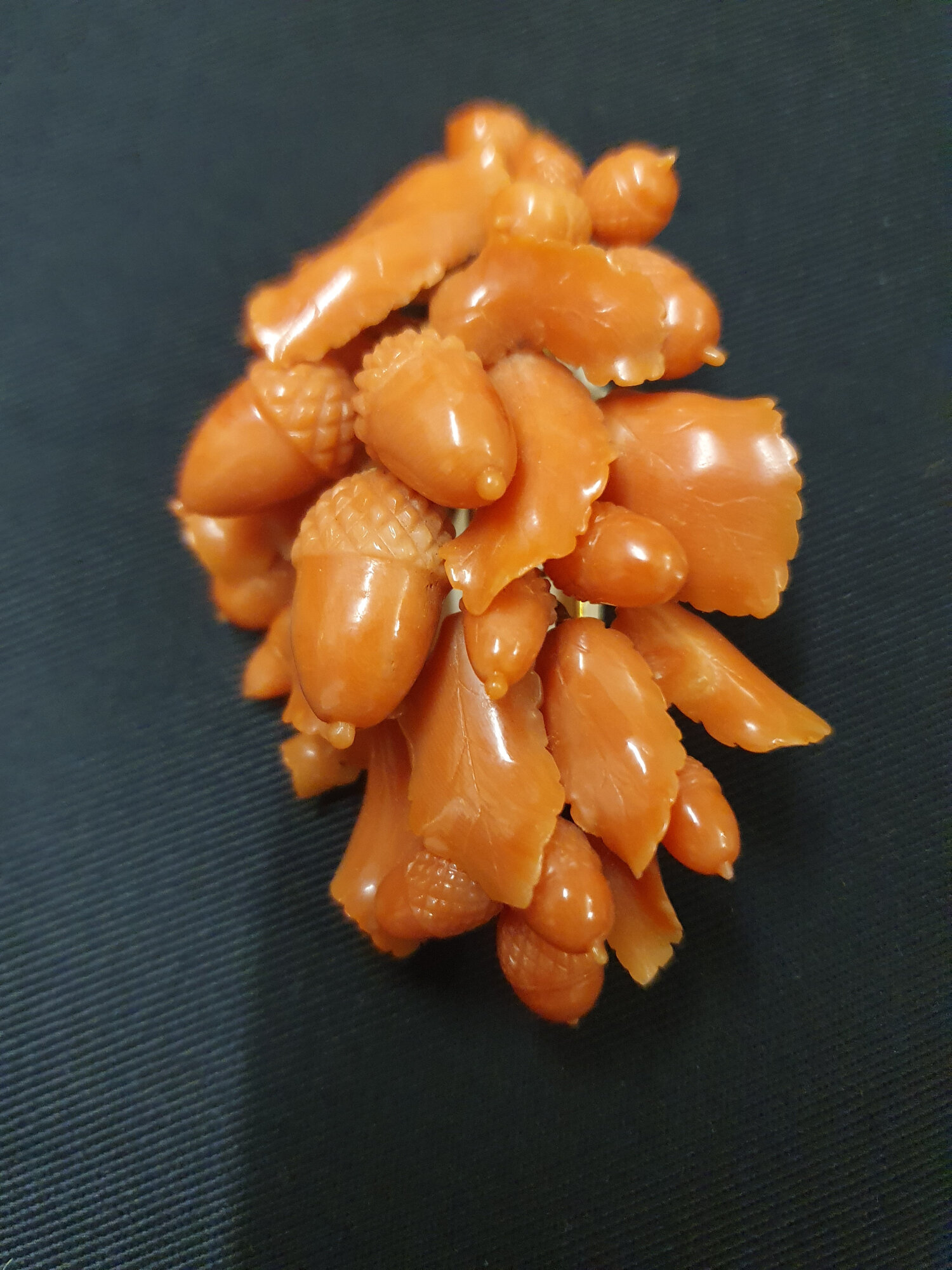
Collect
Collect
The types of materials used to make fashion items come from a large variety of sources. Until recently, most of these would have been collected from nature, which has had a damaging effect on the survival of many plants, animals and birds as well as their habitats.
Although we no longer use some of these materials, there are still many clothes and accessories created that use products which are not sustainable and cause damage to the environment.
Object in focus: Coral brooch
A Young Person’s View: 'The History of Unsustainable Materials’ By Louise Moracchini, Look Again Volunteer
With the dawn of the Industrial Revolution, we are increasingly aware of the impact of unsustainable fashion on our world. Plastic based fibres and synthetic dyes cannot be safely cleaned up, and continue to pollute our environment, damaging people’s livelihoods, as well as local species. Even natural materials like cotton are consuming water and chemicals at rates we cannot maintain for much longer, leading to such extreme consequences as the drying up of the Aral Sea.
We can see the history of these materials in the collection at the Salisbury Museum. Coral, ivory and a tortoise shell make their appearances as fashionable pieces. In using these materials, these pieces reflect the desire for ‘rare’ materials in fashion, even at the cost of the animals used to make them. For example, popular ivory hunting has diminished African elephant populations from 1.3 million in 1942 to 600,000 by 1989, not to mention that the practice is known for being especially cruel and painful for the elephant.
What may have seemed ‘trendy’ in the 1800 and 1900s posed a genuine threat to the native populations of the species that were hunted, and the impact of their popularity is still felt today. Ivory is now illegal to buy and sell in the UK, and with the invention of celluloid, it has been all but replaced as a material.
Coral Brooch, ©The Salisbury Museum collection
Some of the first found fibres date from 8000 BCE, but biomaterials, such as leather, wool, and cotton, have been in use for millennia now.
In principle, these materials, commonly used for creating wearable textiles, are sustainable in that they be reproduced.
However, as time has progressed, the increase in human population and subsequent demand for clothes in turn has created a need for profit that cannot be fulfilled without causing damage.
The widely available synthetic materials have made textile industries reliant on overproduction, sacrificing the environment and workers in the process.
Dangerous pesticides and chemical dyes currently pollute the water supplies around larger factories, poisoning the animals and locals living nearby. About 17 to 20 percent of industrial water pollution is due to chemical dyes, some of which are carcinogenic.
The over-consumption of water is also a huge modern concern for the fashion industry. It takes 10,000 litres of water to produce just a kilogram of cotton, even before making it into a wearable fabric. This effect is most visible in the drying up of the Aral Sea, which has shrunk to just 10 percent of its former capacity, and it widely considered to be a consequence of the over production of cotton. Concerns for water supplies is also noticeable with the coral brooch here at the museum. Coral requires a specific temperature and pH to grow, but rising temperatures have killed large swathes of coral populations, which are a key source of biodiversity on Earth.
Continuing into the future, making sustainable clothing will require using the materials we already have. More effort is being put into way to recycle fabric scraps and minimise waste in the production process. The law and species conservation also have a role to play in reducing damage, by banning some materials, like ivory, and protecting species, like elephants. However, it is important to see the history of these materials on display to understand why they might be harmful, and prevent further damage.
By Louise Moracchini, Look Again Volunteer.



